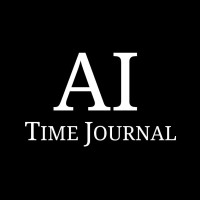
The infusion of artificial intelligence (AI) into creative industries like music, art, and writing has been nothing short of revolutionary. With algorithms capable of producing stunning and one-of-a-kind works, the promise of AI as a creative force is compelling. But, as is often the case, there are limitations to the machine’s abilities we must consider. Let’s explore the nuanced reasons why AI cannot entirely supplant human creatives.
The Irreplaceable Ingenuity of Creatives in the Age of Artificial Intelligence
As we pursue efficiency and novelty, we believe machines can supplant humans in all realms, including the creative sphere. But can artificial intelligence truly replace the ingenuity and imagination of human creatives? Consider the following:
- Human creativity vs. machine intelligence. Machines excel at processing information and generating outputs based on algorithms and data. But they lack the imagination and intuition that humans possess.
- Emotional intelligence and empathy. Emotional intelligence and compassion enable creatives to connect with their audience emotionally. That’s something that AI, with all its analytical power, cannot do.
- Intuition and spontaneity. Intuition and spontaneity allow creatives to act on instinct, impulse, or inspiration. AI systems can generate outputs based on predefined rules and parameters. But they cannot capture the role of intuition and spontaneity in creative processes.
- Cultural and societal influences. Background, environment, and experiences can influence creative expression. These influences may not be accounted for by artificial intelligence. It may not understand the diversity of human cultures and societies.
Balancing Human and AI Inputs for Optimal Creativity
AI cannot replace human creatives. But it can elevate human creativity to new heights. Here are a few ways AI transforms the creative landscape:
- Image enhancement. AI can remove noise, sharpen blurry photos, or upscale low-resolution images.
- Custom font generation. AI can help make font selection more effortless. It can generate custom font pairings that provide a personalized touch.
- Sentiment analysis. The words we use can convey a variety of emotions and meanings. AI can analyze these words to create an appropriate image that captures the essence of the text.
- Real-time feedback. AI can provide real-time feedback on user experience to create designs with maximum impact.
The Importance of Human Oversight in AI Security
The perils of cyberspace can disrupt the delicate dance between creativity and technology. Here are three reasons creatives must implement cybersecurity measures when using AI systems:
- Protect valuable artistic works. Compromised AI systems can lead to stolen, manipulated, or sabotaged work. It can result in reputation, income, or intellectual property loss.
- Preserve creative content quality. Creatives may use AI systems to enhance their creative content. The content may be corrupted, distorted, or degraded if the AI systems are attacked.
- Ensure privacy and security of sensitive information. Creatives may share sensitive or confidential information. The information may be exposed, intercepted, or altered if the AI systems are compromised or attacked.
Here are common types of cyber threats to AI systems used by creatives:
- Data poisoning. Imagine an attacker inserting fake images into the dataset of an AI system that generates images based on text input. The AI can produce inappropriate outputs that damage the reputation of the creative.
- Model extraction. Picture an attacker using queries to deduce the composition or capabilities of an AI model responsible for crafting lyrics. The result could be a copycat or rival who steals the creative’s ideas or techniques without permission or attribution.
- Adversarial examples. This sneaky attack involves inputs designed to fool or mislead AI systems, evade detection, or cause errors. The result could be a degraded or ruined image.
Creatives must be aware of these cyber threats and mitigate them. They can take these cybersecurity measures to safeguard their AI systems:
- Use of password managers. Password managers generate and store strong and unique passwords. They make it difficult for hackers to break into their systems.
- Use of AI systems with secure frameworks. Creatives must choose AI tools with frameworks that adhere to security principles. These tools will have features that mitigate security risks.
- Use of security testing and validation tools. These tools can detect and prevent data poisoning, model evasion, model extraction, model inversion, or adversarial examples. They can also measure the AI systems’ reliability.
- Saving work in cloud storage. Cloud storage is an effective way for creatives to back up and encrypt their data and models, reducing the risk of data loss or corruption. This measure ensures their work remains safe and accessible, even if their devices are compromised.
Conclusion
Human creativity remains indispensable in the creative process. And AI can enhance rather than replace it. However, ensuring cybersecurity measures are in place to protect AI systems is crucial.
